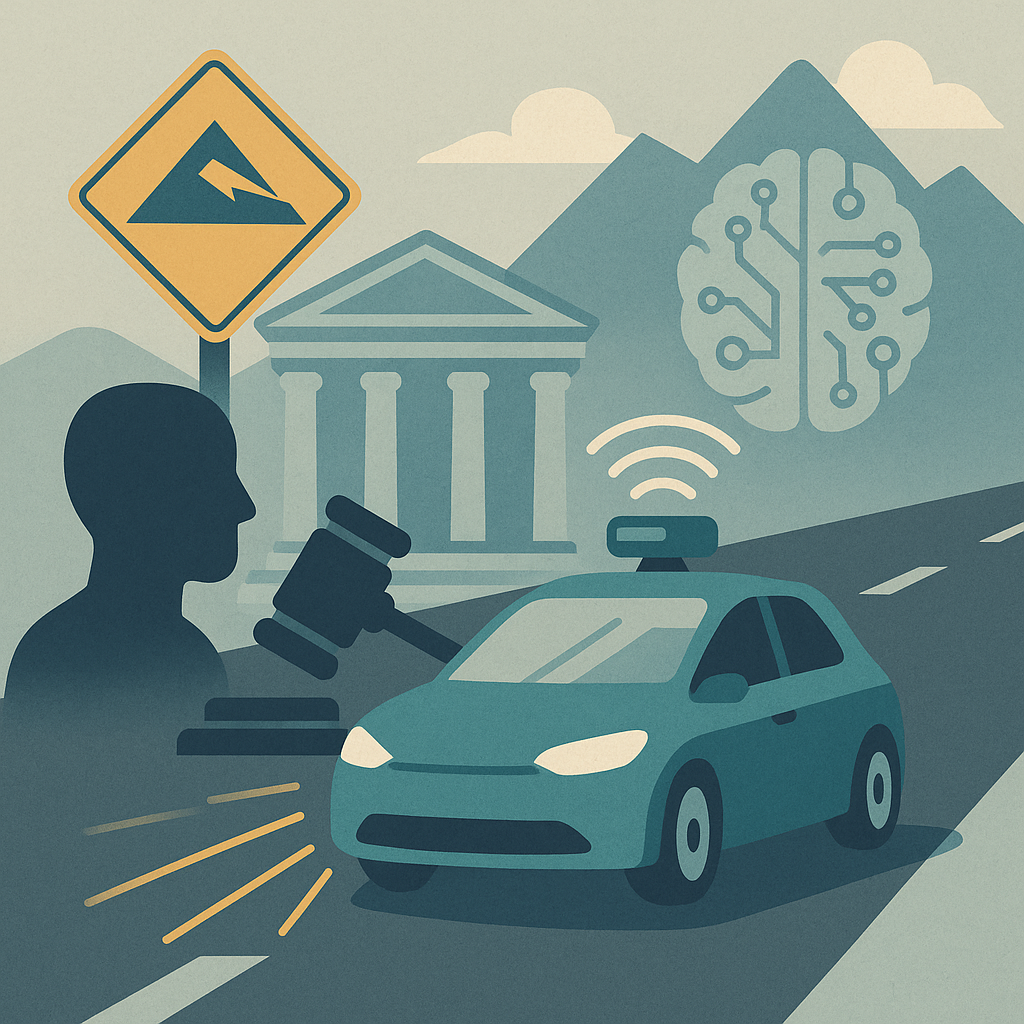Liability for Self-Driving Cars Under Utah Traffic Laws
Plain-English guide to who is at fault when autonomous vehicles crash on Utah roads.
When a self-driving car crashes in Utah, who is actually responsible for the damage, the human inside, the software running the car, or the company that built it? Utah’s traffic code was written for human drivers, but autonomous vehicles are forcing courts, insurance adjusters, and lawmakers to rethink what “fault” means on the road. Utah Law Explained breaks down the rules in plain English so Utahns understand how liability works right now and where the law is headed next.
Who Counts as the “Driver” Under Utah Law?
Human-Driven Vehicles. The driver is always a human responsible for obeying Utah traffic laws. Citations, tickets, and civil liability attach to the person behind the wheel.
Self-Driving Vehicles (Autonomous Mode). Utah’s Autonomous Vehicle Act allows the automated driving system (ADS) to be considered the “driver” when it is engaged. A human occupant may not be legally “driving” even if they are sitting in the car. Fault may shift from the person to the software provider or vehicle manufacturer depending on evidence that the ADS malfunctioned.
Fault and Negligence: How Liability Is Assigned
Human-Driven Vehicles. Negligence depends on conduct: speeding, distraction, impairment, failure to yield, and similar behaviors. Liability usually falls on the human driver unless a mechanical defect caused or contributed to the crash.
Self-Driving Vehicles. Utah evaluates two major pathways when an autonomous vehicle crashes:
A. User Liability. If the human misused the autonomous mode (for example, ignored “hands needed” warnings when required or used the system in conditions where it is not authorized), liability can attach to the user.
B. Product Liability. If the autonomous system acted incorrectly, follow-up claims may target the vehicle manufacturer, the software developer, or sensor and hardware suppliers. Utah courts rely heavily on technical data logs to reconstruct what the system “saw” and how it decided to act.
Data Logs as Evidence
Human-Driven Vehicles. Evidence typically comes from responding officers, witnesses, traffic cameras, photos, and the vehicle’s event data recorder (EDR).
Self-Driving Vehicles. Autonomous vehicles store detailed operational logs that can become central evidence in a Utah crash investigation:
Traffic Violations and Tickets
Human-Driven Vehicles. A citation almost always attaches to the human driver who committed the violation.
Self-Driving Vehicles. Utah law does not yet have a universal rule for issuing tickets to self-driving cars. Enforcement across the country varies: some states ticket the operator or registered owner; some recognize the ADS as the “driver,” but machines cannot receive tickets or appear in court.
In practice, Utah typically assigns responsibility to the human in control of the vehicle unless the ADS is officially recognized as the driver under autonomous mode and the facts show the human was not expected to intervene.
Insurance Coverage and Utah Pilot Programs
Human-Driven Vehicles. Standard car insurance applies, including liability, PIP, and collision coverage. Claims are evaluated based on the driver’s negligence under Utah traffic laws.
Self-Driving Vehicles. Insurers increasingly offer AV-specific endorsements and products. Claims may involve manufacturer liability, software liability, and hardware defect liability in addition to or instead of the human operator. Utah insurers often request ADS log data to determine whether human negligence or autonomous malfunction caused the crash.
Utah’s Autonomous Vehicle Pilot Programs. Utah’s pilot programs allow limited testing of advanced ADS vehicles in controlled environments. Companies must carry higher insurance, follow safety plans, and meet reporting standards. These programs influence how Utah courts interpret autonomous-mode responsibility and may serve as a model for future statewide rules governing fully self-driving fleets.
Checklist: How to Assess Fault in a Self-Driving Car Crash in Utah
Use this Utah-focused checklist to understand where liability may fall in an autonomous-vehicle crash:
- Was the vehicle in autonomous mode or human-driven at the time of the crash?
- Did the human operator ignore required instructions, safety alerts, or misuse the system?
- Does the vehicle’s data log show software malfunction or an incorrect decision from the ADS?
- Were any vehicle components, sensors, or cameras faulty or improperly maintained?
- Did Utah’s traffic laws assign responsibility to the human occupant for that specific maneuver?
- Did the autonomous vehicle comply with Utah’s Autonomous Vehicle Act requirements and any pilot-program rules?
- Has the manufacturer issued software updates or recalls related to the behavior seen in the crash?
- Is there evidence of negligence, defective design, or improper maintenance by any party involved?
Video & Social Learning Hub: Self-Driving Car Liability
YouTube: Who Is Liable When AVs Crash?
Instagram: Short Takes on AV Fault
Need Help After a Self-Driving Car Crash?
Autonomous vehicles are reshaping how Utah assigns fault, investigates crashes, and regulates road safety. As lawmakers update statutes and insurers adapt to AI-driven technology, understanding where accountability falls helps both everyday Utah drivers and tech innovators stay ahead of emerging risks.
Talk to a Utah AttorneyFor more plain-English legal guidance, stay updated with Utah Law Explained, explore our mission on the About Us page, or connect with trusted counsel like Gibb Law Firm.
